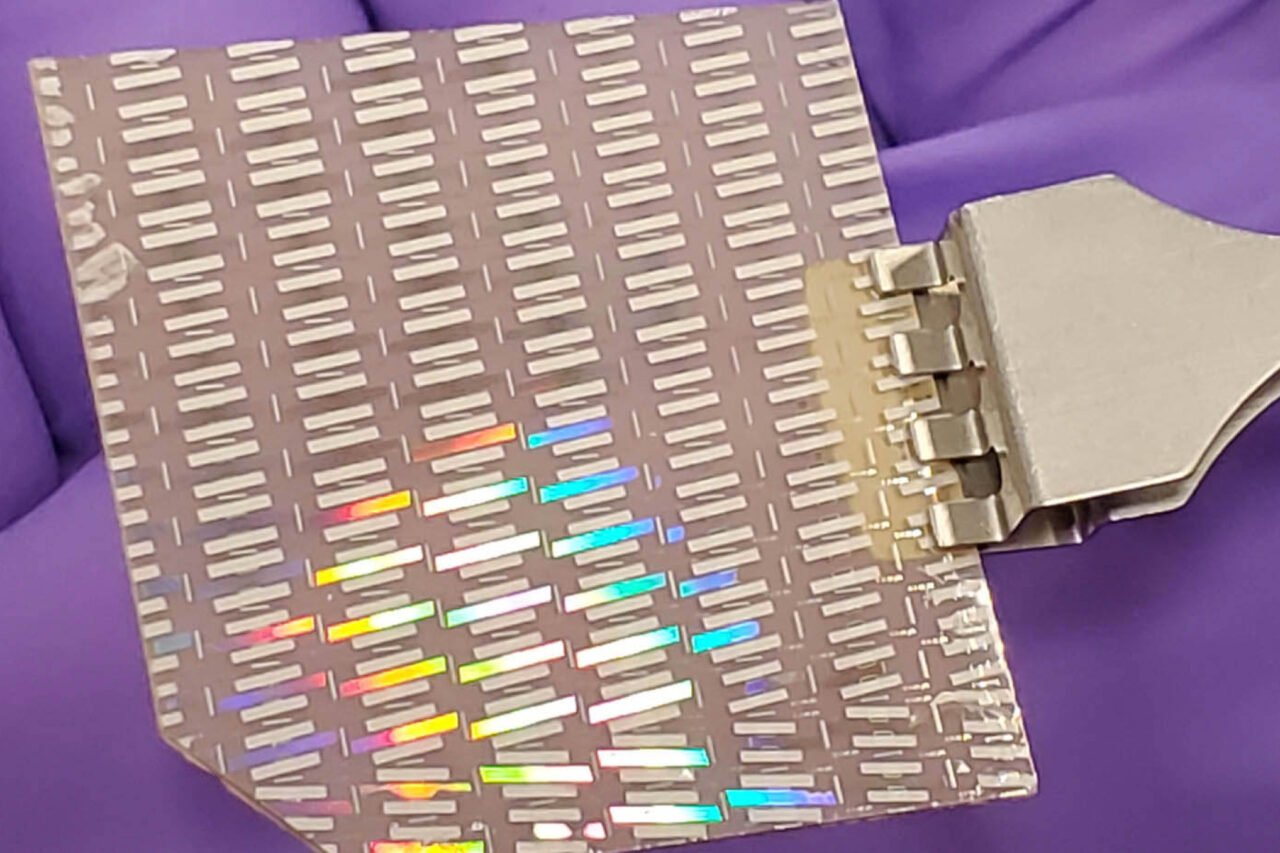Top Stories
Researchers Develop Groundbreaking Sensors for Nuclear Reactors

UPDATE: Researchers at the University of Maine have announced a breakthrough in nuclear technology, developing microelectronic sensors that can withstand the extreme heat and radiation levels of a nuclear reactor’s core. This urgent advancement promises to revolutionize real-time monitoring of nuclear reactors, providing essential data for engineers and operators.
The new sensors were successfully tested at the Nuclear Reactor Laboratory at Ohio State University, where they endured temperatures reaching 1,500 degrees Fahrenheit (800 degrees Celsius) for five days. “The successful development of these sensors will address and alleviate technology barriers that currently hinder the rollout of advanced nuclear reactors,” stated Mauricio Pereira da Cunha, the project’s principal investigator.
These tiny sensors, measuring just 100 nanometers thick, are designed for advanced high-temperature reactors that utilize helium gas and ceramic materials. These reactors operate at higher temperatures, enhancing thermal efficiency but making it challenging for existing sensors to survive. The researchers dedicated two years to perfecting these sensors, leveraging two decades of experience in sensor technology.
All seven tested sensors showed remarkable resilience, remaining functional without degradation after exposure to intense operational conditions. “In addition to extreme temperatures, we’re now also exposing these sensors to intense, in-core levels of nuclear radiation at the same time,” said Luke Doucette, senior research scientist. This dual challenge emphasizes the significant advancements in sensor materials necessary for future nuclear technology.
This breakthrough holds profound implications for nuclear energy, potentially accelerating the deployment of advanced reactors that promise safer and more efficient energy generation. As the demand for clean energy sources intensifies, such innovations are crucial in addressing global energy challenges.
The research was reported by the Department of Energy’s Office of Nuclear Energy, highlighting the urgency of transitioning to more sustainable energy solutions. With these new sensors, the nuclear industry is poised for a transformative leap, marking a significant step towards a more efficient and safer energy future.
Stay tuned for further updates as this story develops.
-

 Science2 weeks ago
Science2 weeks agoInventor Achieves Breakthrough with 2 Billion FPS Laser Video
-

 Top Stories2 weeks ago
Top Stories2 weeks agoCharlie Sheen’s New Romance: ‘Glowing’ with Younger Partner
-

 Business2 weeks ago
Business2 weeks agoTyler Technologies Set to Reveal Q3 Earnings on October 22
-

 Entertainment2 weeks ago
Entertainment2 weeks agoDua Lipa Aces GCSE Spanish, Sparks Super Bowl Buzz with Fans
-

 Health2 weeks ago
Health2 weeks agoCurium Group, PeptiDream, and PDRadiopharma Launch Key Cancer Trial
-

 World2 weeks ago
World2 weeks agoR&B Icon D’Angelo Dies at 51, Leaving Lasting Legacy
-

 Health2 weeks ago
Health2 weeks agoCommunity Unites for 7th Annual Into the Light Walk for Mental Health
-

 Entertainment2 weeks ago
Entertainment2 weeks agoRed Sox’s Bregman to Become Free Agent; Tigers Commit to Skubal
-

 Health2 weeks ago
Health2 weeks agoNorth Carolina’s Biotech Boom: Billions in New Investments
-

 Entertainment2 weeks ago
Entertainment2 weeks agoMother Fights to Reunite with Children After Kidnapping in New Drama
-

 Science2 weeks ago
Science2 weeks agoNorth Carolina’s Biotech Boom: Billions Invested in Manufacturing
-

 Top Stories3 weeks ago
Top Stories3 weeks agoDisney+ Launches Chilling Classic ‘Something Wicked’ Just in Time for October









